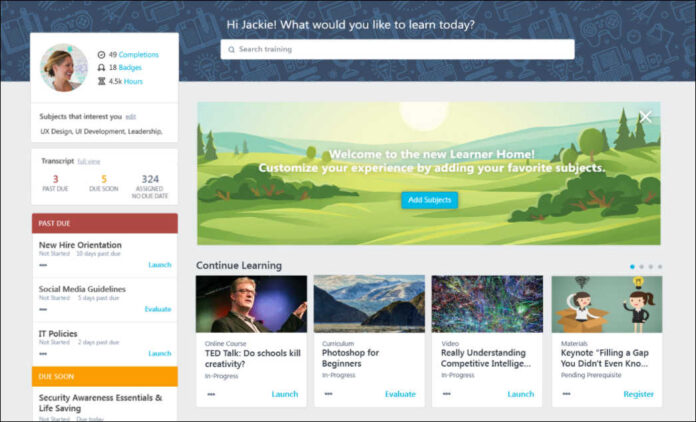
Karthik Suri joined Cornerstone OnDemand in September 2022, after holding leadership roles at Invitae, GE Digital, PayPal, eBay, Magento and Yahoo! As chief product officer, he oversees the company’s product strategy and management, delivery and alignment of learning and development solutions.
How does the ebb and flow of today’s business environment fit into the performance of HR technology? Put another way, how does business today impact the ways companies approach HR technology?
Historically, organizations have taken a “one-size-fits-all” approach to developing their people. However, the key to success in today’s talent landscape lies in the ability to leverage the right talent technology that meets both the needs of your business and your people. Employees increasingly want personalized skill development that’s mapped to where they want to take their career – sort of like a GPS for their career and personal development. Organizations need to grow their people to ensure they have the talent needed today and for where their business is going into the future.
In today’s HR technology market, we see many niche products and tools that claim to transform business. However, the abundance of niche options has resulted in technology bloat – systems that are often disjointed, clunky and repetitive. On the other hand, we’re seeing big technology platforms dipping their toes into HR technology, but barely scratching the surface on what’s possible; and frankly, with a monolithic approach for the modern user. They can lock their customers into their platforms and prohibit them from accessing tools outside their ecosystem.
Instead, businesses that want to stay ahead of potential skill shortages and retain their talent, need to have better options. They need the ability to choose solutions that seamlessly connect and integrate with their other HR and business applications to create a technology ecosystem that uniquely addresses their needs. They also need to adopt a holistic approach to talent management, one that considers performance, learning, mobility, content and more. To be effective, this strategy needs to be powered by technology that is easy to use, fully integrated across the employee’s experience, personalized to every individual.
There’s been talk of a recession coming this year. Given what you just said, how do you see the industry being impacted if we do have one?

If we enter a recessionary environment, one might assume that there will be a greater willingness for the workforce to return to the workplace and more employees eager to maintain their job at their current company. While this could hold some truth, employees aren’t going to lose the power they gained over the past three years. I would argue that even more so during a recession the need for organizations to rely on the skills of their people will increase – this is why we have started to see the term “quiet hiring” floating around. If your workforce is leaner, that means the people you do have will likely be doing more than one job and will need new skills, development and growth.
Organizations will need to continue to invest in their current workforce to help keep costs down and ensure that their employees are equipped with the necessary skills to be successful.
So, even in an uncertain macro-economic climate, several realities endure. Skills shortages continue to be an issue for employers – both in terms of specific roles, and industries that are still trying to hire to pre-pandemic levels (data point). Talent’s expectations of Growth is not negotiable– it’s still a major driver of engagement and decision to join or stay at a company (data point). The employee value prop stays – just because the great resignation is over doesn’t mean that people aren’t still expecting more from their employers. This has material impact of performance and productivity. Visibility will be paramount – uncertain times and short planning windows mean that businesses must be able to make fast decisions and pivot. You can’t do that if you don’t know what you’ve have.
Hence, an integrated, employee and employer centric technology platform that offers workforce agility, engaging personalized experiences, insights and visibility and future-readiness becomes a winning proposition.
Outside of business conditions, what demands — from either customers or end users — will drive the market?
Both our Skills Research Report from the past summer and the Talent Mobility Report we launched this month have highlighted the reality that organizations need to acknowledge and embrace the rapid pace of digital transformation and follow suit with how they manage their talent. High-performing companies are prepared, recognizing that their people need to be equipped with training, upskilling, reskilling and mobility opportunities so that they are not left behind when it is too late to start updating their skilling.
More than ever before, employees want their organizations to invest in their learning and development and provide them with insights into where they can go next within their organization. Organizations that fail to recognize this will fall behind in the market.
They are also expecting that their internal tools and technologies have the same consumer-grade experiences they are accustomed to in everyday life.
Image: CSOD













